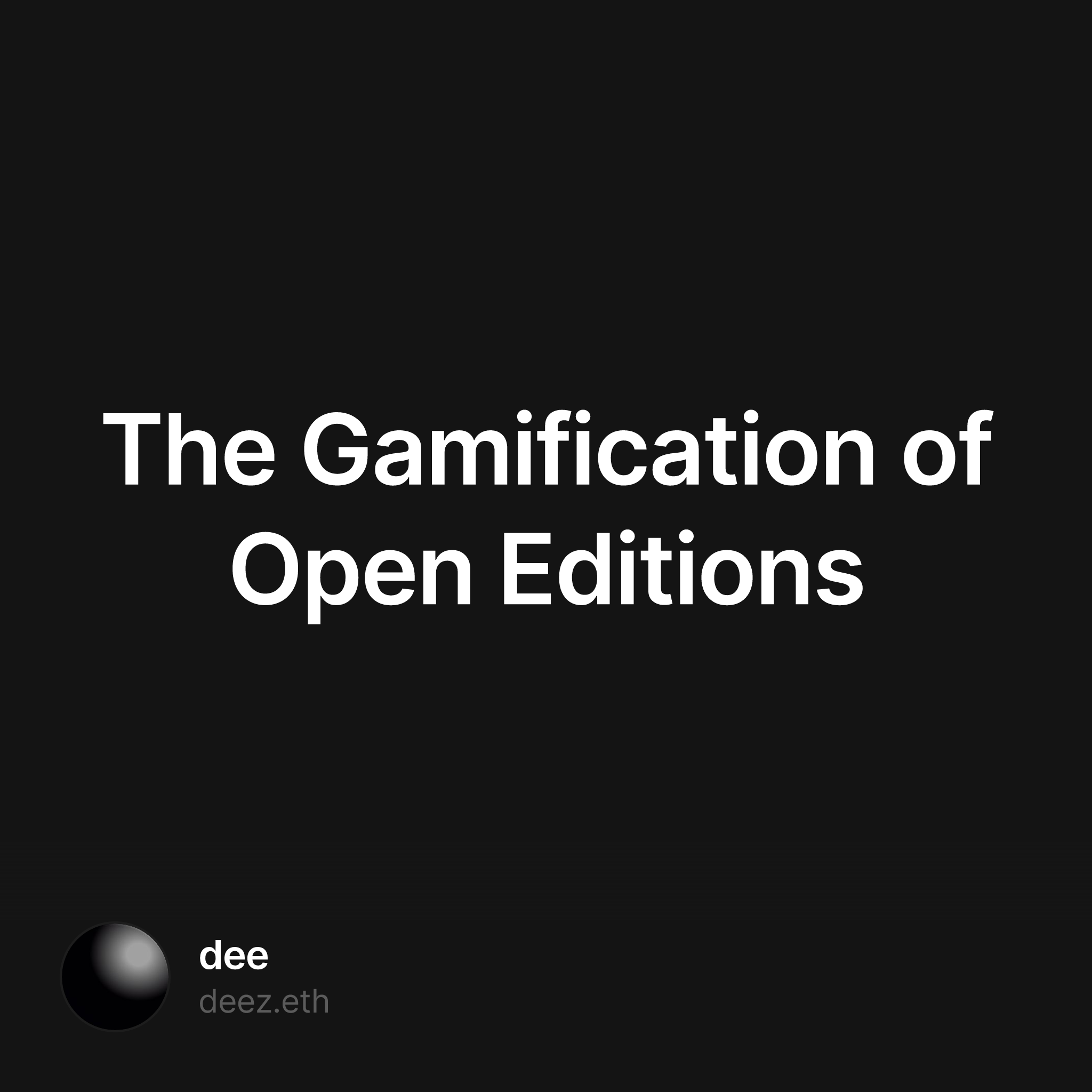Burn games, raffles, and the open ended world of gamification.
The Open Edition release format has resulted in large scale distribution of NFTs with a high density of unique collectors. This format is great for getting NFTs in thousands of wallets, however, large scale distribution comes with some tradeoffs mainly collector pressure and “WEN utility”.
The release valve for this pressure is the gamification of the collector experience. Gamification solves many problems: bloated supply, token utility, attention generation and momentum sustainability. Below is a quick run through of the pressures artists face and the emerging models of gamification that we see in the space.
Managing Collector Expectations
Large distribution creates large expectations for artists. Collectors of large editions put pressure on artists to provide utility or unique experiences. During the 10k PFP phase, this manifested as collectors demanding roadmaps.
In the current Open Editions era, this is manifesting as gamification through burn to redeem mechanics and raffles. In this model, each edition becomes an opportunity to unlock new experiences or rarer pieces from the artist.

Playing Burn Games
We are basically in the Minesweeper era of Open Editions.
Burn to redeem mechanics are a common method of gamifying open editions. Burning solves the bloated supply problem by reducing the supply of large collections during burn events. For example, artists create tiers of unlocks for collectors that burn 1, 10, or 100 NFTs throughout the lifecycle of the collection. Collectors are incentivized to reduce the supply to collect new NFTs. This reduction has a material impact on the collection’s secondary market.

More burns mean a more limited supply of NFTs on the market to collect. This increase in scarcity of NFTs is equal to an increase in scarcity for a collector's opportunity to play the burn game. On the secondary market this can translate to persistent demand for the NFTs as more collectors seek to participate in burn events. This is heightened in moments where both time to burn and supply are scarce.
Burn events solve the utility problem by creating unlockable NFTs and experiences along the burn map (roadmap of this cycle). Maintaining attention for the lifecycle of a project can be difficult for artists. Burn events help artists generate momentum and attention.

Raffles
Raffles are becoming the second emergent game for artists to deploy. Raffles create gamified environments in which the skill required to win is knowing when to participate. In raffles, collectors seek to increase their likelihood of winning grail NFTs by stacking editions.

While this behavior is fairly new, it's not uncommon – just look at sneaker drops. Now we are seeing new platforms emerge to meet the increasingly specialized needs of artists looking to gamify the collection of their NFTs. Examples of this include Manifold’s market leading burn to redeem functionality and Babylon’s raffles.
Playing With Tokens
A common pain point for artists is managing all of their different collections across platforms. It creates added operational work for artists who would prefer to put out pieces as part of a single body of work. This is one of the major unlocks of ERC-1155 – an NFT standard that allows for artists to have many different editions in a single contract.

Artists can now create their burn and redeem games for tokens from the same contract – keeping everything happening in a single place. To illustrate this – imagine we are playing the card game UNO. If I put down a draw four in UNO, you have to pick up cards from that same contract or deck. I wouldn’t tell you to draw four and have you pick up four chips from a separate game like Connect Four. The same is true for redeemable tokens. You want everything to happen in the same place. This is what 1155 enables.
This convenience and cleanliness puts 1155 tokens into pole position for creating burn games, raffles, and other fun mechanics that we’ll see emerge in the next year or so.
What we’ll see going forward
We now have the pieces in place to create dynamic and engaging experiences with large onchain audiences. The rules have yet to be set, but that’s exactly what makes this game exciting to play. Game types will continue to expand beyond burn to redeem and raffles.
There’s a future in which collectors are burning tokens as a method of playing cards or making moves on a chess board. There are entire adventures that could emerge as burn maps take on a more exploratory nature with twists, turns, and unknown outcomes. There’s game mechanics that will result in the redemption of real word objects and experiences.
Imagination is endless.
🌜🌞🌛

